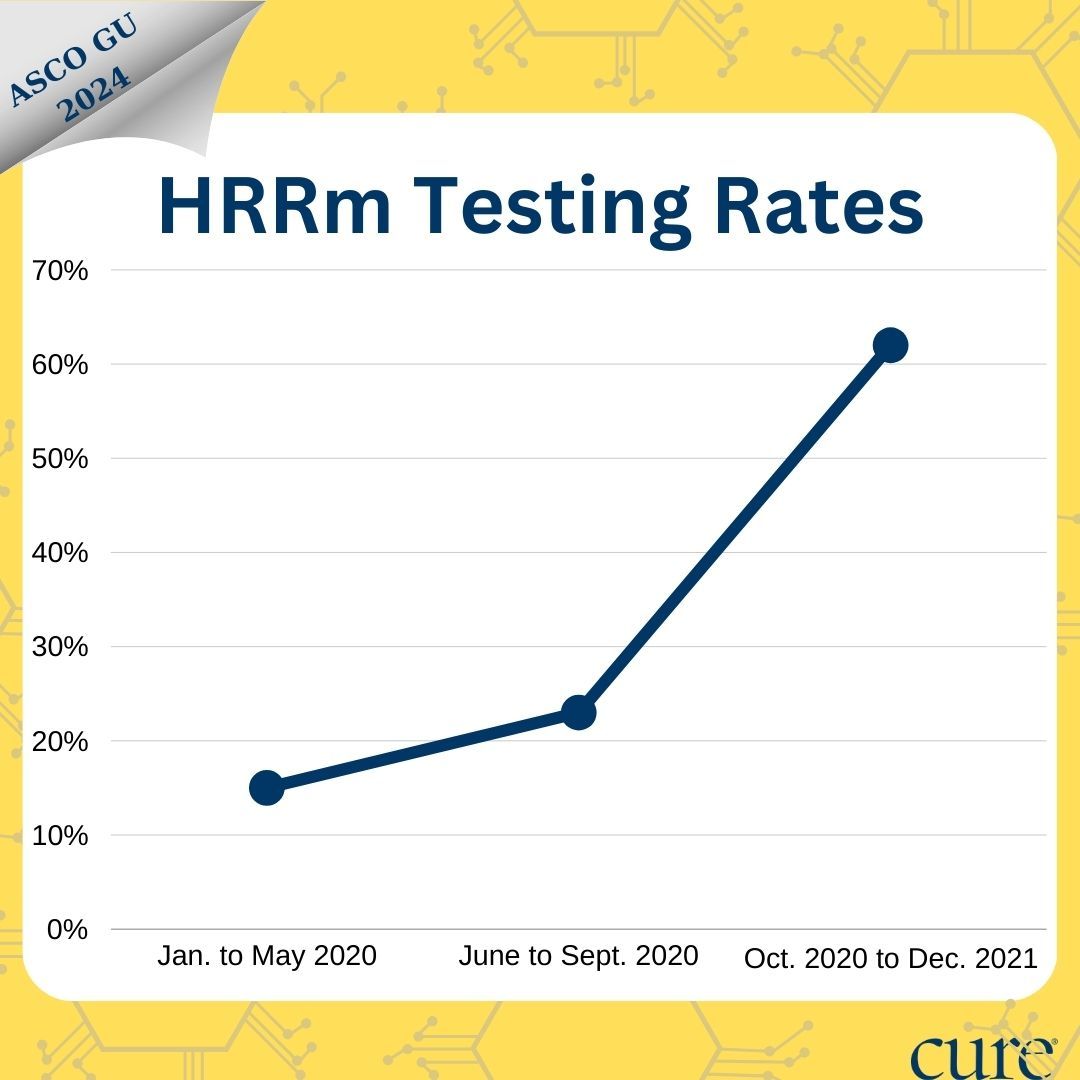Personalized treatment options have the potential to improve outcomes for patients with metastatic castration-resistant prostate cancer (mCRPC). However, recent research suggests that many patients are not receiving the recommended testing that can point them in the way of these targeted treatments.
According to research presented at the 2024 Genitourinary Cancers Symposium, 59.2% of patients underwent standard-of-care germline or somatic testing — meaning that 40.8% of patients did not. Somatic and germline testing can determine if a patient has homologous recombination repair (HRR) gene-mutant disease. If they do, they would be eligible for a type of treatment called a PARP inhibitor.
There are currently two FDA-approved PARP inhibitors in the mCRPC space: Lynparza (olaparib), for patients with HRR-mutant disease, and Rubraca (rucaparib).
“There were two PARP inhibitors that were approved in 2020 (for mCRPC), and this was very important in the field of prostate cancer,” Dr. Neal Shore, study author and urologist at Atlantic Urology Clinics, said during a presentation of the data.
Study highlights:
- Recent research indicates that a significant number of patients with metastatic castration-resistant prostate cancer are not undergoing recommended testing to identify specific genetic mutations that could guide targeted treatments.
- Testing for homologous recombination repair (HRR) gene mutations can determine eligibility for PARP inhibitors. Two FDA-approved PARP inhibitors are Lynparza (olaparib) and Rubraca (rucaparib).
- Despite testing positive for HRR-mutant disease, approximately a third of patients (33.2%) did not receive treatment with a PARP inhibitor, suggesting a gap in translating genetic testing results into personalized therapy.
- The study emphasizes the need for improved education on the benefits and limitations of genetic testing, particularly in community oncology and urology settings.
Despite this, approximately a third (33.2%) of patients who were tested and were determined to have HRR-mutant disease ended up receiving treatment with a PARP inhibitor.
Shore and colleagues analyzed data from 996 patients with mCRPC. This included 93% whose care was managed by community oncologists; 6% by community urologists; and 1% by academic oncologists.
A total of 59.2% (590 patients) received HRRm testing, of which 19.8% (117 patients) underwent germline testing; 59.8% (353 patients) underwent somatic testing; and 4.1% (24 patients) underwent germline and somatic testing; and 16.3% (96 patients) were unknown.
Patient data from Jan. 1, 2020, through Dec. 31 2021 was used in the study, and the researchers noticed an increase in testing rates after the first FDA approval of a PARP inhibitor, Lynparza, which was approved in May 2020, in this space. Specifically, HRRm testing was conducted in 15% of patients between Jan. 1, 2020, and May 31, 2020. Testing rates then increased to 23% between June 1, 2020, and Sept. 30, 2020, and then increased even more to 62% between Oct. 1, 2020 and Dec. 31, 2021.
The majority (64%) of patients received testing after they had already undergone at least one line of therapy, with 48% of patients being tested after failure on first-line therapy.
Somatic tissue testing was utilized more often than liquid biopsy, and among patients who were tested, 31.7% (187 patients) were HRRm-positive, including 11.2% (21 patients) of patients who underwent germline testing, and 73.8% (138 patients) who underwent somatic testing, 2.1% (four) who underwent both somatic and germline testing and 12.8% (24 patients) of patients whose testing type was unknown.
The researchers noted that not all tests included the 14 HRR genes indicated in the Lynparza approval. HR mutations were most commonly detected in ATM, BRCA2, CHEK2 and CDK12 genes, while ctDNA was analyzed with somatic liquid biopsy testing.
“These samples were enriched for ATM and CHEK2 mutations, which are also commonly associated with clonal hematopoiesis of indeterminate potential, also known as CHIP,” Shore explained. “It’s possible that not all ATM and CHEK2 mutations detected somatically were biopsy testing or tumor-derived.”
Among patients with mCRPC whose disease was HRRm-positive, 66.8% (125 patients) received a PARP inhibitor.
Ultimately, these findings highlight the need for improved usage of germline and somatic testing for this patient population, and is potentially negatively impacting therapeutic offerings, the researchers wrote in their abstract.
“Additional education on tumor testing and PARP inhibitor therapy is warranted, particularly in community oncology and urology settings, which should include the benefits and limitations of somatic tissue and liquid testing, as well as the potential to detect CHIP in liquid biopsies, which may lead to false interpretations of results,” Shore concluded.
For more news on cancer updates, research and education, don’t forget to subscribe to CURE®’s newsletters here.





